Great Ashfield
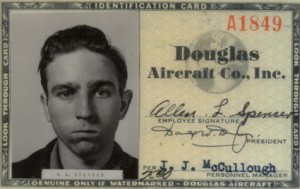 My dad, Allen Spencer, went to work for Douglas Aircraft Company on May 19, 1942. He was a young man of just 18 years. Dad wasn’t with Douglas Aircraft Company for very long, because of World War II, and his enlistment in the Army Air Force on March 12, 1943. Nevertheless, the job my dad had while he was at Douglas Aircraft Company would play a big part in his future military assignment as a flight engineer on a B-17 Bomber during World War II, stationed at RAF Great Ashfield in Suffolk, England. Because of Dad’s job there, I have always had an interest in Douglas Aircraft Company.
My dad, Allen Spencer, went to work for Douglas Aircraft Company on May 19, 1942. He was a young man of just 18 years. Dad wasn’t with Douglas Aircraft Company for very long, because of World War II, and his enlistment in the Army Air Force on March 12, 1943. Nevertheless, the job my dad had while he was at Douglas Aircraft Company would play a big part in his future military assignment as a flight engineer on a B-17 Bomber during World War II, stationed at RAF Great Ashfield in Suffolk, England. Because of Dad’s job there, I have always had an interest in Douglas Aircraft Company.
While people might think they don’t know much about Douglas Aircraft Company, they really do, just under a different name. The Douglas Aircraft Company was an American aerospace manufacturer based in Southern California. It was founded in 1921 by Donald Wills Douglas Sr and later merged with McDonnell Aircraft in 1967 to form McDonnell Douglas. With that merger, Douglas Aircraft Company ceased to exist. The name McDonnell Douglas might be a bit more familiar to people, but it was really when McDonnell Douglas merged with Boeing in 1997 that the company became a household name. Everyone has heard of Boeing Aircraft Company.
While Douglas Aircraft Company no longer exists, they made great strides in the aerospace industry during their time in business. One early claim to fame was the first circumnavigation of the world by air in Douglas airplanes in 1924. That was just 21 years after the first powered flight, taken by the Wright Brothers. That may sound like a long time, but to go from the rickety-looking plane the Wright Brothers flew, to something that was  capable of making the flight around the world in just 21 years is truly outstanding. The circumnavigation mission was first presented to Douglas Aircraft Company in 1923, when the US Army Air Service, interested in carrying out a mission to circumnavigate the Earth for the first time by aircraft, approached Douglas Aircraft Company to present it to them. The mission was called “World Flight.” Donald Douglas proposed a modified Douglas DT to meet the Army’s needs. The two-place, open cockpit DT biplane torpedo bomber had previously been produced for the US Navy. The DTs were taken from the assembly lines at the company’s manufacturing plants in Rock Island, Illinois, and Dayton, Ohio, to be modified.
capable of making the flight around the world in just 21 years is truly outstanding. The circumnavigation mission was first presented to Douglas Aircraft Company in 1923, when the US Army Air Service, interested in carrying out a mission to circumnavigate the Earth for the first time by aircraft, approached Douglas Aircraft Company to present it to them. The mission was called “World Flight.” Donald Douglas proposed a modified Douglas DT to meet the Army’s needs. The two-place, open cockpit DT biplane torpedo bomber had previously been produced for the US Navy. The DTs were taken from the assembly lines at the company’s manufacturing plants in Rock Island, Illinois, and Dayton, Ohio, to be modified.
Four of these modified aircraft left Seattle, Washington, on April 6, 1924, flying west, and two of these returned there on September 28 to great fanfare. Unfortunately, one plane had been lost under fog conditions, and another was forced down over the Atlantic and sank. The DWC prototype was then rechristened and joined the other two in completing the North American leg of the flight. With the success of this flight, the Army Air Service ordered six similar aircraft as observation aircraft.
In 1934, Douglas produced a commercial twin-engined transport plane, the Douglas DC-2, which was followed by the famous DC-3 in 1936. The wide range of aircraft produced by Douglas included airliners, light and medium bombers, fighter aircraft, transports, reconnaissance aircraft, and experimental aircraft. While these were all important types of aircraft, it would really be the work they did during World War II, that really put 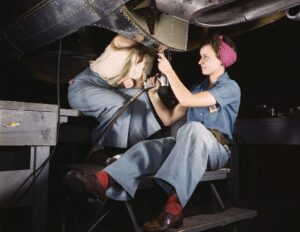 them on the map in my opinion. With so many young men heading off to war, the women really stepped up at this time and built many of the World War II planes. During that time, Douglas joined the BVD (Boeing-Vega-Douglas) consortium to produce the B-17 Flying Fortress. As far as I’m concerned, that was one of the greatest planes every produced. I suppose that sounds odd, considering that it was so long ago, but for its time, the B-17 was and really still is legendary. And while I don’t know if my dad had a part in building the B-17 Bomber, I know that he repaired them and knew them inside and out. I am proud of the work my dad did on the airplanes he helped to build, and proud of his time with Douglas Aircraft Company.
them on the map in my opinion. With so many young men heading off to war, the women really stepped up at this time and built many of the World War II planes. During that time, Douglas joined the BVD (Boeing-Vega-Douglas) consortium to produce the B-17 Flying Fortress. As far as I’m concerned, that was one of the greatest planes every produced. I suppose that sounds odd, considering that it was so long ago, but for its time, the B-17 was and really still is legendary. And while I don’t know if my dad had a part in building the B-17 Bomber, I know that he repaired them and knew them inside and out. I am proud of the work my dad did on the airplanes he helped to build, and proud of his time with Douglas Aircraft Company.
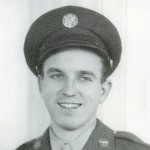
 A while back, my sister, Cheryl Masterson and I were talking about our Dad, Allen Spencer’s military training. Like much of Dad’s military service, big discussions about his training days were non-existent. So, I decided to trace his military career, to the best ability I could, and basically take a walk in his footsteps. We knew that he shipped out of Fort Snelling, Minnesota, and then spent time in Salt Lake City, Utah and in Kearney, Nebraska. We weren’t sure exactly where his basic training took place or his training for the B-17. That conversation got my curiosity going, and I decided that I needed to check it out. It’s not always easy to research a persons path through every aspect of their lives, but with the knowledge that he initially started out at Fort Snelling, I hoped to trace the rest of his journey through World War II. Fort Snelling, it turns out was a Reception Center. The men and women started there, received their vaccinations, medical exams, and their gear. They were classified and assigned to a unit. Then they were shipped out for their basic training.
A while back, my sister, Cheryl Masterson and I were talking about our Dad, Allen Spencer’s military training. Like much of Dad’s military service, big discussions about his training days were non-existent. So, I decided to trace his military career, to the best ability I could, and basically take a walk in his footsteps. We knew that he shipped out of Fort Snelling, Minnesota, and then spent time in Salt Lake City, Utah and in Kearney, Nebraska. We weren’t sure exactly where his basic training took place or his training for the B-17. That conversation got my curiosity going, and I decided that I needed to check it out. It’s not always easy to research a persons path through every aspect of their lives, but with the knowledge that he initially started out at Fort Snelling, I hoped to trace the rest of his journey through World War II. Fort Snelling, it turns out was a Reception Center. The men and women started there, received their vaccinations, medical exams, and their gear. They were classified and assigned to a unit. Then they were shipped out for their basic training.
Most of the men in dad’s original unit would go on to become part of the transport or supply teams, but because my dad had a job building airplanes for Douglas Aircraft Company prior to enlisting in the Army Air Force, he was moved to a unit that would spend the war in a B-17G flying Fortress Bomber. For my dad, it was an epic job. He often wrote home to his family about just how amazing the B-17 Bomber was, and how proud 
 he was to be serving on one. Part of dad’s job was to be the flight engineer, another position that stemmed from his vast knowledge of airplanes. The flight engineer knew the all equipment on the B-17 better than the pilot and any other crew member from the engines to the radio equipment to the armament to the engines to the electrical system and to anything else. Many flight engineers served as maintenance crew chiefs before moving to the position of a B-17 flight engineer. The flight engineer was also the top turret gunner. Dad’s training for his work took him to Miami Beach, Florida, then to Gulfport, Mississippi, and Dyersburg, Tennessee.
he was to be serving on one. Part of dad’s job was to be the flight engineer, another position that stemmed from his vast knowledge of airplanes. The flight engineer knew the all equipment on the B-17 better than the pilot and any other crew member from the engines to the radio equipment to the armament to the engines to the electrical system and to anything else. Many flight engineers served as maintenance crew chiefs before moving to the position of a B-17 flight engineer. The flight engineer was also the top turret gunner. Dad’s training for his work took him to Miami Beach, Florida, then to Gulfport, Mississippi, and Dyersburg, Tennessee.
In Gulfport, Mississippi, dad was trained as a flight airplane mechanic, and it was here that he volunteered to become an aerial gunner as well. He received his wings in November 1943, following gunnery training in Las Vegas, Nevada. Dyersburg Army Air Force Base was the largest combat aircrew training school built during the early war years. It was the only inland B-17 Flying Fortress training base east of the Mississippi River. The base was located on 2,541 acres, not including the practice range. Approximately 7,700 crew men received their last phase training at DAAB. From Dyersburg AAB, dad was sent to Kearney, Nebraska. There he and his crew were assigned a brand new B-17G bomber. Shortly thereafter they flew to New York to be dispatched to their base in the European Theater…Great Ashfield, Suffolk, England. Before arriving there, he wasn’t even sure where he was going, because these things were kept top secret, and were revealed on a need-to-know basis. Based out of Great Ashfield, dad flew 36 missions, one more that the required 35, having volunteered to fill in for a sick 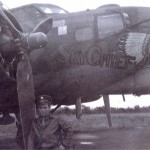
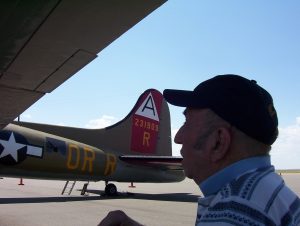 crewmember on the final flight. In one of his letters, he told his family not to worry about him, because as he said, “I’m not afraid of what the near future might bring. I’m going into combat fully confident of my plane, crew, and myself. And I know that with the help of God, I’ll come home again in just as good a condition as I am right now.” And so he did. Today would have been my dad’s 95th birthday. Happy birthday in Heaven Dad. We love and miss you very much and we are so proud of you.
crewmember on the final flight. In one of his letters, he told his family not to worry about him, because as he said, “I’m not afraid of what the near future might bring. I’m going into combat fully confident of my plane, crew, and myself. And I know that with the help of God, I’ll come home again in just as good a condition as I am right now.” And so he did. Today would have been my dad’s 95th birthday. Happy birthday in Heaven Dad. We love and miss you very much and we are so proud of you.
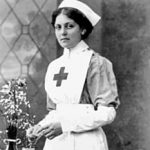
 Travel by ship was not always a safe mode of travel. Things like icebergs, wars, storms, and seashores were known to bring to an end a voyage, that was otherwise very enjoyable. Most people remember the Unsinkable Molly Brown, who was really Margaret Tobin, mostly because of all the publicity and even a musical. Surviving the sinking of the Titanic, while an amazing feat, was something that 705 other people did too. The stories and musical were a way of remembering the tragedy. As amazing as surviving a ship sinking in those days was, there is something that is far more amazing!!
Travel by ship was not always a safe mode of travel. Things like icebergs, wars, storms, and seashores were known to bring to an end a voyage, that was otherwise very enjoyable. Most people remember the Unsinkable Molly Brown, who was really Margaret Tobin, mostly because of all the publicity and even a musical. Surviving the sinking of the Titanic, while an amazing feat, was something that 705 other people did too. The stories and musical were a way of remembering the tragedy. As amazing as surviving a ship sinking in those days was, there is something that is far more amazing!!
Surviving, not one, but three ship accidents in those days. In 1910, Violet Jessop began working as an ocean liner stewardess and nurse for the White Star line. She was on board when RMS Olympic sailed on September 20, 1911. The Olympic was a luxury ship that was the largest civilian liner at that time. Olympic left from Southampton and collided with the British warship HMS Hawke. There were no fatalities when Olympic sand, and despite damage, the ship was able to make it back to port without sinking. She doesn’t really count this one, because it didn’t sink, but then it did collide with another ship. She didn’t think that one was such an amazing feat, but I’d say that counts. Jessop was then a stewardess on the RMS Titanic April 10, 1912, when she was 24 years old. Four days later, on April 14, it struck an iceberg in the North Atlantic, a story with we all know very well. Titanic sank a little more than two hours after the collision. Jessop described in her memoirs how she was ordered up on deck, because she was to function as an example of how to behave for the non-English speakers who could not follow the instructions given to them. She watched as the crew loaded the lifeboats. She was later ordered into lifeboat 16; and as the boat was being lowered, one of the Titanic’s officers gave her a baby to look after. The next morning, Jessop and the rest of the survivors were rescued by the RMS Carpathia. According to Jessop, while on board the Carpathia, a woman, presumably the baby’s mother, grabbed the baby she was holding and ran off with it without saying a word. Records indicate that the only baby on boat 16 was Assad Thomas, who was handed to Edwina Troutt, and later reunited with his mother on the Carpathia. Then, during the First World War, she served as a stewardess for the British Red Cross. On the morning of November 21, 1916, she was on board the HMHS Britannic, that had been converted into a hospital ship, when it sank in the Aegean Sea due to an unexplained explosion. The Britannic sank within 57 minutes, killing 30 people. British authorities decided that the ship was either struck by a torpedo or hit a mine planted by German forces.
After the war, Jessop continued to work for the White Star Line, before joining the Red Star Line and then the 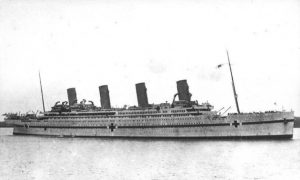
 Royal Mail Line again. During her tenure with Red Star, Jessop went on two around the world cruises on that company’s largest ship, the Belgenland. In her late thirties, Jessop had a brief marriage, and in 1950 she retired to Great Ashfield, Suffolk, where my dad had been stationed during World War II. Jessop, often winkingly called “Miss Unsinkable,” died of congestive heart failure in 1971 at the age of 83.
Royal Mail Line again. During her tenure with Red Star, Jessop went on two around the world cruises on that company’s largest ship, the Belgenland. In her late thirties, Jessop had a brief marriage, and in 1950 she retired to Great Ashfield, Suffolk, where my dad had been stationed during World War II. Jessop, often winkingly called “Miss Unsinkable,” died of congestive heart failure in 1971 at the age of 83.

 When I talked to my dad about his time at Great Ashfield in Suffolk, England, we talked about, among other things, the sign at the town entrance that still stands today, after all these years since the end of World War II. The picture of the B-17G Bomber flying low over the town is not something that would necessarily be well received these days, when people are so quick to complain about the planes when they live near an airport. I understand why people would not like planes flying low on takeoffs and landings these days, but the planes that fly over my house really don’t bother me at all. Nevertheless, my dad assured me that the people of Great Ashfield felt anything but irritation at the low flying planes that graced their skies during World War II.
When I talked to my dad about his time at Great Ashfield in Suffolk, England, we talked about, among other things, the sign at the town entrance that still stands today, after all these years since the end of World War II. The picture of the B-17G Bomber flying low over the town is not something that would necessarily be well received these days, when people are so quick to complain about the planes when they live near an airport. I understand why people would not like planes flying low on takeoffs and landings these days, but the planes that fly over my house really don’t bother me at all. Nevertheless, my dad assured me that the people of Great Ashfield felt anything but irritation at the low flying planes that graced their skies during World War II.
England was among the nations who had taken some serious hits by the Nazi war machine in the early days of World War II, prior to the entrance of the United States into the war. In fact, it was on this day, December 29, 1940 that London took a massive hit during a German raid. The German planes had been targeting London since August of 1940 as payback for the British attacks on Berlin. In September the Germans dropped 337 tons of bombs on docks, tenements, and the streets in one of London’s poorest districts. Then came December 29, 1940. The attack on that day produced widespread destruction of not just civilians, but also many of London’s cultural relics. The bombing was relentless and as a result, 15,000 separate fires were started. Historic buildings were severely damaged or destroyed. Among them, the Guildhall, which was an administrative center of the city 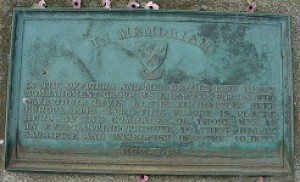 that dated back to 1673, but contained a 15th century vault. Eight Christopher Wren churches were also damaged or destroyed. St Paul’s Cathedral caught fire, but was saved by the firefighters who risked their own lives to save it. Westminster Abbey, Buckingham Palace and the Chamber of the House of Commons were also hit, but the damage to these was less severe. These attacks, that went on from September of 1940 through May of 1940, were known as the London Blitz, and they killed thousands of civilians.
that dated back to 1673, but contained a 15th century vault. Eight Christopher Wren churches were also damaged or destroyed. St Paul’s Cathedral caught fire, but was saved by the firefighters who risked their own lives to save it. Westminster Abbey, Buckingham Palace and the Chamber of the House of Commons were also hit, but the damage to these was less severe. These attacks, that went on from September of 1940 through May of 1940, were known as the London Blitz, and they killed thousands of civilians.
It wasn’t until Pearl Harbor was attacked on December 7, 1941, that the United States entered World War II, and soon after came the time that my dad spent at Great Ashfield beginning in early April of 1944 until he went home in October of 1945. While it may have seemed to many that we were somewhat late coming to the party, the war torn nations around the world were happy to see us arrive. It wasn’t that we were going to be the heroes riding in on the white horses, but we meant instant reinforcements to nations that needed assistance badly. The airmen were well received in the towns surrounding Great Ashfield, and the other air bases in England, but it was Great Ashfield that felt such gratitude that they went to the length of making and leaving to this day, the sign showing the B-17G Bomber flying low over the local church. There is also another memorial honoring the men of the 8th Air Force and the 385th Heavy Bombardment Group.
The reasons for the warm feelings toward the 8th Air Force and the 385th Heavy Bombardment Group are obvious. It was so much more than just the reinforcements the United States provided. While talking to my 
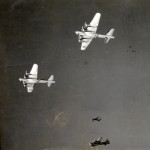 dad about this, he revealed that the main reason that they were so grateful is that the safest times for the area were when the B-17G Bombers were flying overhead. The German aircraft would become really scarce when the Bombers were around, because they didn’t want to be shot down either. The constant activity surrounding the air field made it almost impossible for the Germans to attack the area. Bombings are horrible, and take a huge toll on the civilians, as well as buildings. I suppose I would be eternally grateful for those planes, those men, and the United States 8th Air Force too. It gave peace of mind.
dad about this, he revealed that the main reason that they were so grateful is that the safest times for the area were when the B-17G Bombers were flying overhead. The German aircraft would become really scarce when the Bombers were around, because they didn’t want to be shot down either. The constant activity surrounding the air field made it almost impossible for the Germans to attack the area. Bombings are horrible, and take a huge toll on the civilians, as well as buildings. I suppose I would be eternally grateful for those planes, those men, and the United States 8th Air Force too. It gave peace of mind.
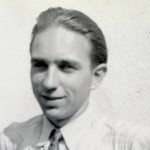 In 1938 to 1939, my dad moved from the family farm, into town so he could attend vocational school. He studied sheet metal fabrication. After he graduated, he moved to Santa Monica, California, at the very young age of just 17 years, and went to work for Douglas Aircraft. Uncle Bill, dad’s brother, let him take his 1934 Plymouth, which broke down on the way there, and Dad had to wire his dad for the money to fix it. It’s pretty had to fix a broken down car, when you are on the way to a new job. Most of us don’t have a lot of money at that point, and after the Great Depression, the country was just starting to come back. This job would begin to move my dad into a position for some of his future jobs, later in life, beginning with his military placement as a Flight Engineer. The Flight Engineer had to know everything about the plane, because it was his job to try to get them back to the base safely…even if something went wrong with the plane. There was no place to pull over when you are flying at 25,000 to 30,000 feet. There was at least one time I know of that Dad was the only reason they came back safely, because the landing gear would not go down. He had to hang upside down in the open bomb bay and crank it down by hand.
In 1938 to 1939, my dad moved from the family farm, into town so he could attend vocational school. He studied sheet metal fabrication. After he graduated, he moved to Santa Monica, California, at the very young age of just 17 years, and went to work for Douglas Aircraft. Uncle Bill, dad’s brother, let him take his 1934 Plymouth, which broke down on the way there, and Dad had to wire his dad for the money to fix it. It’s pretty had to fix a broken down car, when you are on the way to a new job. Most of us don’t have a lot of money at that point, and after the Great Depression, the country was just starting to come back. This job would begin to move my dad into a position for some of his future jobs, later in life, beginning with his military placement as a Flight Engineer. The Flight Engineer had to know everything about the plane, because it was his job to try to get them back to the base safely…even if something went wrong with the plane. There was no place to pull over when you are flying at 25,000 to 30,000 feet. There was at least one time I know of that Dad was the only reason they came back safely, because the landing gear would not go down. He had to hang upside down in the open bomb bay and crank it down by hand.

My dad was very good at the work he did for Douglas Aircraft, but on December 7, 1941, everything changed. Dad left California, in the 1936 Plymouth he had bought, and came home just as the United States was entering World War II. His plan, of course, was to join the Army Air Forces. He was a perfect match for the Army Air Forces, because of his knowledge of air craft, and they saw that right away. He was put into training, and placed on a B-17G crew, as the Flight Engineer, and stationed at Great Ashfield, Suffolk, England. His crew left Texas, and flew to New York City, on April 1, 1944, where they refueled and went on to England.
Most crews on B-17G planes had to fly 35 missions before they could come home, but at Great Ashfield, because of how dangerous that area was, they only had to fly 25. My dad ended up flying 26 before he came home. I don’t think his family knew how dangerous that base was, because my dad would not have told them. “The average life of a B-17 bomber at Great Ashfield was just over 4 months. Very few B-17 bombers that were transferred to the base lasted a complete tour of duty. The average Airman lasted 15 combat missions and few completed an entire tour of 25 missions. Much less 35 !!!! The average LIFE of a Ball Turret Gunner in combat was 12 MINUTES.” Knowing that my dad somehow beat those odds, reminds me of 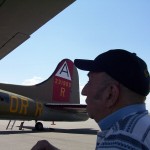 the many miracles in his life. His crew did lose at least one Ball Turret Gunner, and my dad tried everything he could to save his life, but it was no use…he was gone.
the many miracles in his life. His crew did lose at least one Ball Turret Gunner, and my dad tried everything he could to save his life, but it was no use…he was gone.
In later years, Dad would work for Fred Dewell, as a welder and sheet metal fabricator. His training at vocational school and Douglas Aircraft made him an asset to that company. Then Dad went to work for WATCO, building the boxes for Caterpillar trucks. He was one of their best welders, and was remembered by the people who worked there for many years after his retirement. His training as a young man of only 16 years, served him well all of his life, and I have always been very proud of the things he did in his lifetime.

 Most of the time, when I think about the faces from my parents’ past, I think of ancestors, or school friends, or maybe even old flames. All of those people bring questions to mind, but most of them can be answered, and the relationship laid to rest, at least in the case of old friends or old flames, but some faces continue to run through my mind again and again. Such is the case with the men who served in the Army Air Force with my Dad at Great Ashfield Army Air Base, which is just North of Ipswich in Suffolk, England. I know these men were Dad’s good friends, because they were important enough to him to take their pictures to preserve their memory for the rest of his life, but for whatever reason, their names were not put on the pictures, so I don’t know who they were.
Most of the time, when I think about the faces from my parents’ past, I think of ancestors, or school friends, or maybe even old flames. All of those people bring questions to mind, but most of them can be answered, and the relationship laid to rest, at least in the case of old friends or old flames, but some faces continue to run through my mind again and again. Such is the case with the men who served in the Army Air Force with my Dad at Great Ashfield Army Air Base, which is just North of Ipswich in Suffolk, England. I know these men were Dad’s good friends, because they were important enough to him to take their pictures to preserve their memory for the rest of his life, but for whatever reason, their names were not put on the pictures, so I don’t know who they were.
Dad never talked much about the war, something that, while common among people who have fought in such battles, I nevertheless find strange. I always knew that he was a top turret gunner and flight engineer on a B-17 Bomber during World War II, but much of that information came from my mom. I guess she didn’t really know why Dad wouldn’t tell his daughters about something that made her and us so very proud of him either. I guess it just wasn’t his style, or maybe the memories of what he had to do there were just too hard to talk much about. Dad has always been such a gentleman, and had such a gentle spirit, that I’m quite certain that killing, even from a plane with a bomb, and not having to look at the faces of those who died, was something that was hard to live with, even though it was necessary, and even though he felt strongly about the purpose for which he was fighting.
In his letters home to his mom and family, he mentioned some names of friends from home, or people he trained with, but they were so restricted on what they could write about during their time in England, and the people they were with, that few names were mentioned. It was only after Dad had passed away, and we were going through pictures from his past for his slide show, that we found these pictures of his friends from his military days…those faces from Dad’s past, that I wonder about now. It was too late to ask Dad who they were then, and I have always been sorry about that. My niece, Michelle asked him about some of his military days for a report she was doing, but she didn’t know about these 
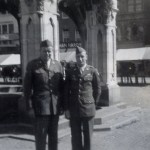 pictures then, or she might have asked.
pictures then, or she might have asked.
I will probably never know who these men were, or if they were members of Dad’s crew on the B-17 he assigned to, and I am sorry about that. I have been trying to find out more about his military days and the men he served with, and these pictures could have been a great source of valuable information. Sadly, I will probably always wonder about the faces from Dad’s past, and the impact they had on his life.
 I have been reading some of my dad’s letters that were written to his family while he was in the Army Air Force during World War II. They were written from places as familiar to me as Salt Lake City and as unfamiliar as Great Ashfield, Suffolk, England. He told of all the new experiences he was having, such as flying in the B-17 Bomber, and just checking out the area where he was stationed. And he told of attending church services quite often…something that didn’t change throughout his entire life, and for that I’m thankful. That one thing brings me so much peace of mind…knowing that I will see my dad again.
I have been reading some of my dad’s letters that were written to his family while he was in the Army Air Force during World War II. They were written from places as familiar to me as Salt Lake City and as unfamiliar as Great Ashfield, Suffolk, England. He told of all the new experiences he was having, such as flying in the B-17 Bomber, and just checking out the area where he was stationed. And he told of attending church services quite often…something that didn’t change throughout his entire life, and for that I’m thankful. That one thing brings me so much peace of mind…knowing that I will see my dad again.
But, as I read his letters, there was some sadness in his tone. The life he knew was changing every day, and he was too far away, and powerless to stop it. He was always concerned about his mother and sister living so far out of town on the farm, and even asked his brother to rent them a house in town so life would be easier on them, but then when it seemed that they would not be going back to the farm, it was hard to think of coming home to an unfamiliar house. Then, his brother was thinking about getting married (which he didn’t do at that time or to that girl), and moving to Mexico to work for a time, and it looks like he would not be there for his only brother’s wedding. Suddenly it occurs to my dad that so often, life changes when you least expect it, and you find yourself not ready for those changes. I suppose this is a common feeling with military personnel, in that they have little say about where they are stationed, how long they are there, and when they might get leave.
Life changes are hard anyway, and I suppose that being thousands of miles from home would make them seem so much more unbelievable and unsettling. For me, knowing that my mom still lives in the home I grew up in gives a strong sense of stability, but knowing that my dad is no longer here, is very unsettling. In his letters, dad wondered about men he knew from back home, and asked about their whereabouts often. He was praying for their safety, as I am sure they were for his. I have wondered about those men too. So far, in my reading, he has received no answers about those men, so I wonder if he ever heard news of them. I may never find out.
I don’t like change much myself…at least not the kind that brings with it the sadness of loss. Whether it is loss of childhood days, or loss of life, all loss is painful. I know that the service our military men do for their country and its citizens is necessary, and those who serve are honorable men who deserve our deepest thanks, but I have to mourn with them the loss of parts of their lives that must be sacrificed so others can have the freedoms we so enjoy.
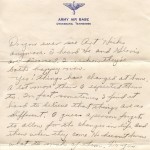 As for my dad, I know that the life he returned to after the war was vastly different than the one he left behind, and I feel a deep sorrow for him in that he must have felt that loss deeply. Dad never talked much about the war, and in fact any information we got had to be pried out of him. Maybe some memories are too painful to relive, and are best left alone. Still, Dad’s letters have shown me a side of my dad that I didn’t exactly know existed…or maybe I did. Dad was always a very caring man, who was extremely loyal to his family…be it his mother, dad, sisters and brother, or my mom, my sisters and me. I suppose that all of life’s changes mold us into the people we are, and so they must be.
As for my dad, I know that the life he returned to after the war was vastly different than the one he left behind, and I feel a deep sorrow for him in that he must have felt that loss deeply. Dad never talked much about the war, and in fact any information we got had to be pried out of him. Maybe some memories are too painful to relive, and are best left alone. Still, Dad’s letters have shown me a side of my dad that I didn’t exactly know existed…or maybe I did. Dad was always a very caring man, who was extremely loyal to his family…be it his mother, dad, sisters and brother, or my mom, my sisters and me. I suppose that all of life’s changes mold us into the people we are, and so they must be.
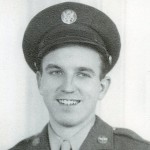 Today is Veteran’s Day, and most of us have a Veteran we think of when we think of this day. They are the heroes who served their country, protecting our nation and other nations around the world. They willingly answer the call when the enemy rears its ugly head and we have to go in and push them back, so the freedoms that we so love can continue to exist for us and for other nations. My dad was one of those heroes.
Today is Veteran’s Day, and most of us have a Veteran we think of when we think of this day. They are the heroes who served their country, protecting our nation and other nations around the world. They willingly answer the call when the enemy rears its ugly head and we have to go in and push them back, so the freedoms that we so love can continue to exist for us and for other nations. My dad was one of those heroes.
Dad joined the Army Air Forces on March 19, 1943 at the age of 18. He would turn 19 on April 27, 1943. He had been employed at Douglas Aircraft Company Inc since May 19, 1942, so I’m sure the Army Air Forces could see that he had experience in the mechanics of airplanes. Dad deployed with his crew in a brand new B-17G Bomber to Great Ashfield, Suffolk, England in April of 1944. Dad was trained as the flight engineer. That is a position of great importance on a plane, in that he knew everything about the plane, and if anything went wrong, he was the one who had to fix it. If he couldn’t fix it, they would likely crash, so he needed to know everything about the plane, and Dad did. Once when the landing gear would not come down, Dad had to hang upside down in the open bomb bay, while his crew held on to him, and hand crank the landing gear until it was down and locked. I’m quite sure there were many sighs of relief when the gear was finally down. Dad was also the top turret gunner on the B-17G Bomber, and received the Distinguished Flying Cross, the Air Medal with four Oak Leaf Clusters, signifying that he had shot down four German planes, and two Gold Stars, signifying that he had taken part in two major aerial engagements. In all he would take part in 35 bombing missions before he was honorably discharged on October 3, 1945.

During the time Dad was in the service, he sent most of his pay home in the form of war bonds, telling his mother that if she needed the money, she was to use any or all of it. He wrote letters to her as often as he could…his way of letting her know he was ok. He worried more about his mom worrying about him than he did about himself. He was a hero to his mom, as well as to his country. And he carried that heroic attitude through the rest of his life…always putting the needs of those he loved and even those he didn’t know ahead of his own. That is what makes a true hero. That is what my dad was. I am so proud of you Dad. I love and miss you very much.
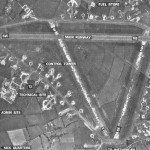
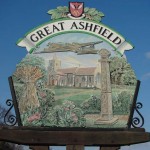 We look back on the wars of the past and where we fought them, and no matter how hard we try to cover up those places…to erase the past as it were, the earth remembers. My dad was stationed at Great Ashfield in Suffolk, England during World War II. That was a very busy place in those days, and the people who lived there during the war were grateful to the men of the 8th Air Force. Great Ashfield was largely a B-17 base, and the towns around the base were fairly safe, because the 8th Air Force was very capable and much feared. Their very presence made people feel safer, in a time when feeling safe was…well, a precious commodity.
We look back on the wars of the past and where we fought them, and no matter how hard we try to cover up those places…to erase the past as it were, the earth remembers. My dad was stationed at Great Ashfield in Suffolk, England during World War II. That was a very busy place in those days, and the people who lived there during the war were grateful to the men of the 8th Air Force. Great Ashfield was largely a B-17 base, and the towns around the base were fairly safe, because the 8th Air Force was very capable and much feared. Their very presence made people feel safer, in a time when feeling safe was…well, a precious commodity.
The area where the air base was at that time is still marked by the memorials to the men who kept them safe during that awful time. A beautiful sign decorated with a B-17 Bomber still marks the Great Ashfield Gate. It is a tribute to those great men who fought and died to protect the lives of people they didn’t even know. Fighting for people they don’t even know is after all the core of every person in the military. It is maybe something we civilians don’t really understand…until someone steps up and does it for us. That is how those people felt, and why they continue to honor those great men to this day…the earth remembers.
I looked Great Ashfield up on Google Earth. We are blessed today to have the ability to take a virtual tour of places we might never have seen otherwise. When I first looked it up, while I was making a book of my dad’s war days for my dad and my Uncle Bill, all you could see was from the air, and while the air base is no longer an air base, you can still see exactly where it was, and a small part of it is still used for small planes today…the earth remembers.
Tonight as I write this I looked it up again, and now you can actually get right down to the edge of the base, as if you were standing right there. Google Earth now takes those street views, and Great Ashfield is one of them they have done. As I looked at the edge of the base, tears came up in my eyes, and I got a lump in my throat, because I knew that this was a place where my dad had walked…his old stomping grounds, as the old saying goes. 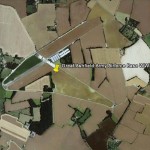
 Dad had told me about three Poplar trees at the end of the runway, and all the men knew that when you saw those three Poplar trees, you were safe. The enemy wouldn’t dare follow you here. As I stood there at the edge of the base, looking around the area, I was almost dumbfounded when those same three Poplar trees came into view…just like in the pictures I had found. They are still there to this day, as a reminder, at least to me that my dad always made it safely home…the earth remembers, and so do I.
Dad had told me about three Poplar trees at the end of the runway, and all the men knew that when you saw those three Poplar trees, you were safe. The enemy wouldn’t dare follow you here. As I stood there at the edge of the base, looking around the area, I was almost dumbfounded when those same three Poplar trees came into view…just like in the pictures I had found. They are still there to this day, as a reminder, at least to me that my dad always made it safely home…the earth remembers, and so do I.

